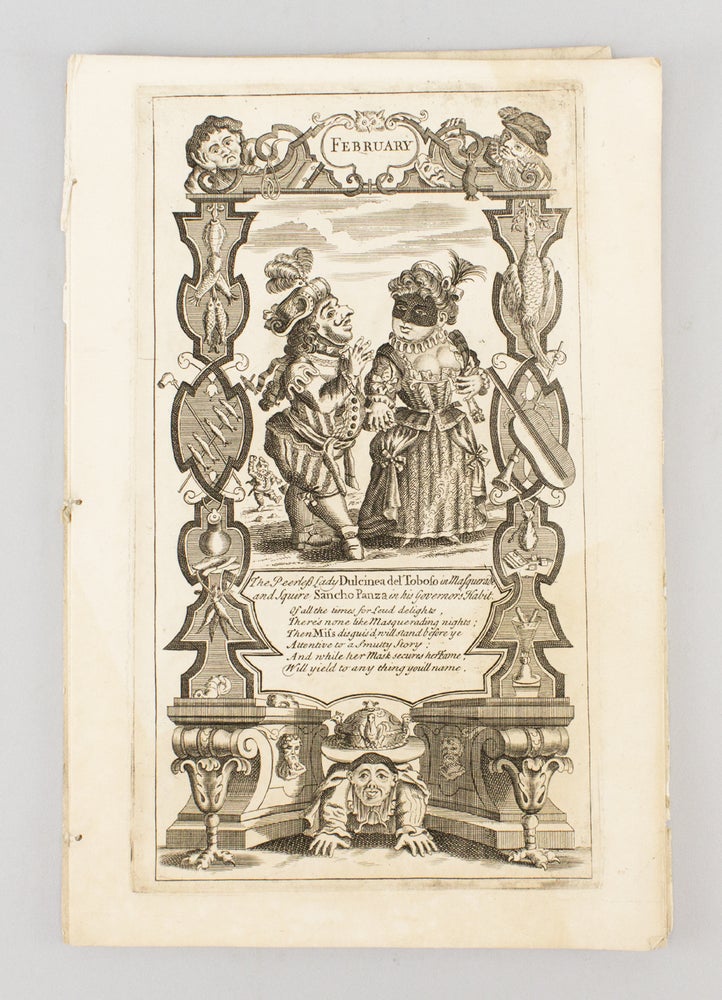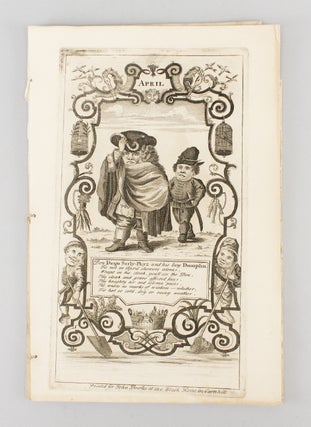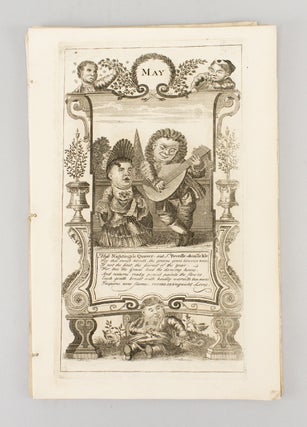THE TWELVE MONTHS OF THE YEAR REPRESENTED BY LILLIPUTIAN FIGURES.
([London: John Bowles, 1770?]). 285 x 186 mm. (11 1/4 x 7 1/2"). 12 plates, printed on recto only.
Unbound and laid into a wrapper of handmade paper from the period. In a new green folding cloth box. Each engraving with one central scene surrounded by a decorative border featuring additional figures and emblems. Sheila O’Connell, "The Popular Print in England 1550-1850," pp. 159-161. ◆Leaves for January and December a little browned and soiled, the latter with two one-inch tears in the margins with early repairs, other leaves in very fine condition.
A remarkable survival, this delightful set of prints features an amusing array of dwarfen characters portraying various societal types in contemporary garb engaged in activities appropriate to each month. The month of May, for example, features "Miss Nightengale Quaver" and her probable suitor "Sr. Tweedle-dum Tickle" making (literal) music together, the gentleman strumming a lute and the lady singing along. Though fashionably dressed, both figures are caricatured, rendering the accompanying six lines of verse praising the beauty of the month--and how it "inspires new flames, revives extinguisht Loves"--more than a little humorous. Other characters like "Don Diego Surly-Phyz and his boy Dumplin," and "Beau Noodle and Mistress Simper ye Bar-keeper," give an idea of the range of types, trades, and human flaws on display here, all of which are depicted in a similarly whimsical manner. This particular genre of imagery owes much to the work of Jacques Callot (1592-1635), whose engravings of dwarfs appeared in "Varie Figure Gobbi" (1616). In the 18th century the "Gobbi" figures were further popularized by German and Dutch artists, most notably in a work called "Il Callotto Resuscitatio" (ca. 1715), which features images that are extremely reminiscent of the present work. The anonymous artist who designed our suite of plates undoubtedly drew on this tradition while also borrowing from the work of Jonathan Swift, applying the word "Lilliputian" to these clearly dwarf-like characters. The original plates were probably published in the 1730s or '40s, and certainly by 1753, when the group appeared in John Bowles' catalogue alongside a number of other Lilliputian-themed prints. The presence of wove paper in this set--a material available from the 1760s but not in wide use until later in the century--suggests that this particular copy was printed closer to 1770. Due to the ease with which they may be broken up and damaged, it is extremely rare to find a complete set of these plates on the market, and even rarer to find them in such fine condition. (ST12946)
Price: $6,500.00



